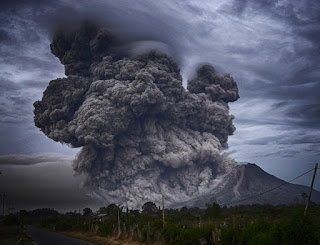Reshaping the Earth with the Genesis Flood
Earth is a gorgeous place, inspiring patriotic songs in various countries and awe in individuals. As I have said before, all this grandeur is in a wrecked world, and we cannot conceive of what it was like before the Genesis Flood. Now I'm backing off on the "wrecked" part. Somewhat.
In the midst of judgment by the deluge, our Creator was reworking the planet. The world was made to be beautiful because it is a part of his nature, and also for our benefit. He would not provide for Noah and his family to be saved, then repopulation, so people would see piles of rubble for thousands of years.
 |
| Mount Sinabung, Indonesia, Unsplash / Yosh Ginsu |
What an amazing world we live in! Such varied and dramatic landscapes, from the endless dunes of the Sahara to the lofty peaks of the Himalayas and the volcanic Hawaiian Islands. We marvel at their beauty and breathtaking scale, in awe of the Creator who produced such grandeur.But if you take a closer look, you’ll discover a very different story. All these grand features speak of massive changes in the past, on a scale never observed today. Every landform required earth-moving processes to tear away miles of material and redistribute them somewhere else—not by slow accumulation but by rapid and catastrophic processes.
You can read it all over at "Sculpting a New Home."